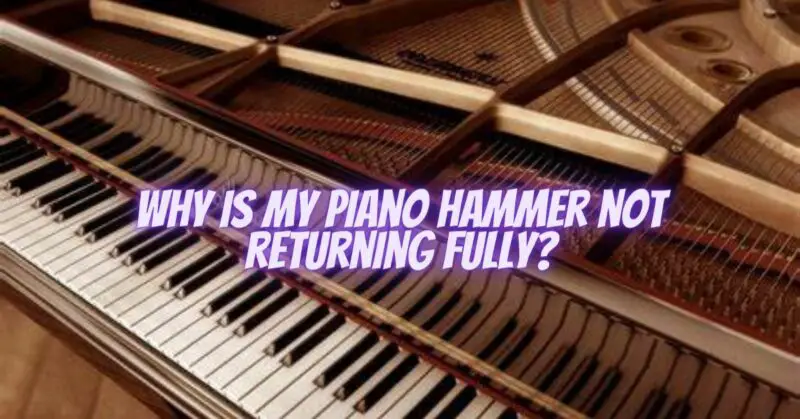When a piano hammer fails to fully return after striking a string, it can affect the instrument’s playability and produce an undesirable sound. Understanding the potential causes of incomplete piano hammer return and implementing the appropriate solutions can help restore the proper functioning of your piano. In this article, we will explore the common reasons why a piano hammer may not fully return and provide insights into resolving this issue.
Causes of Incomplete Piano Hammer Return:
- Friction or Obstruction: Friction or obstruction within the piano action mechanism can impede the smooth movement of the hammer. This can be caused by accumulated dirt, dust, or debris, or by worn or misaligned action components.
- Loose or Worn Hammer Butt: The hammer butt connects the hammer to the piano’s action mechanism. If it becomes loose or worn, it can hinder the hammer’s proper return. Tightening or replacing the hammer butt may be necessary to address this issue.
- Damaged or Weak Hammer Springs: The hammer spring provides the necessary tension and return force to the piano hammer. If the spring is damaged or weak, the hammer may not return fully. Replacing the hammer spring can restore the required tension and ensure proper hammer movement.
- Misaligned or Worn Jack: The jack is a crucial part of the piano action mechanism that assists in the hammer’s return. If the jack is misaligned or worn, it can impede the hammer’s full return. Realignment or replacement of the jack may be required to resolve this issue.
- Regulating or Voicing Issues: Improper regulation or voicing of the piano action can affect the hammer’s return. If the hammer is regulated too close to the string or if the hammer voicing is imbalanced, it can result in incomplete return. Engaging the services of a qualified piano technician for action regulation and voicing adjustments is recommended.
Resolving Incomplete Piano Hammer Return:
- Cleaning: Thoroughly clean the piano action mechanism, including the hammers, jacks, and other components, to remove any dirt, dust, or debris. Use a soft brush or cloth and avoid using excessive moisture.
- Lubrication: Apply a small amount of piano action lubricant to the appropriate contact points within the action mechanism. This can help reduce friction and facilitate smoother hammer movement.
- Action Regulation: Engage the services of a qualified piano technician to assess and regulate the piano action. They can adjust the various components, including hammer blow distance, hammer return, and jack alignment, to ensure optimal performance and complete hammer return.
- Hammer Butt and Spring Check: Inspect the hammer butt for any looseness or wear. If necessary, tighten or replace the hammer butt to ensure proper connection and movement. Similarly, examine the hammer springs for damage or weakness and replace them if needed.
- Professional Assistance: For complex issues or if you are unsure about performing repairs yourself, it is advisable to consult a professional piano technician. They possess the expertise and knowledge to diagnose and resolve specific problems related to incomplete piano hammer return.
Conclusion: Addressing incomplete piano hammer return is essential for maintaining the playability and sound quality of your instrument. By identifying the potential causes, such as friction, loose or worn components, or regulation issues, and implementing the appropriate solutions, you can restore the proper functioning of the piano hammer. Regular maintenance, including cleaning, lubrication, and action regulation, will help ensure consistent and optimal performance. Seeking professional assistance when needed is always recommended to ensure accurate diagnosis and resolution of complex issues.


